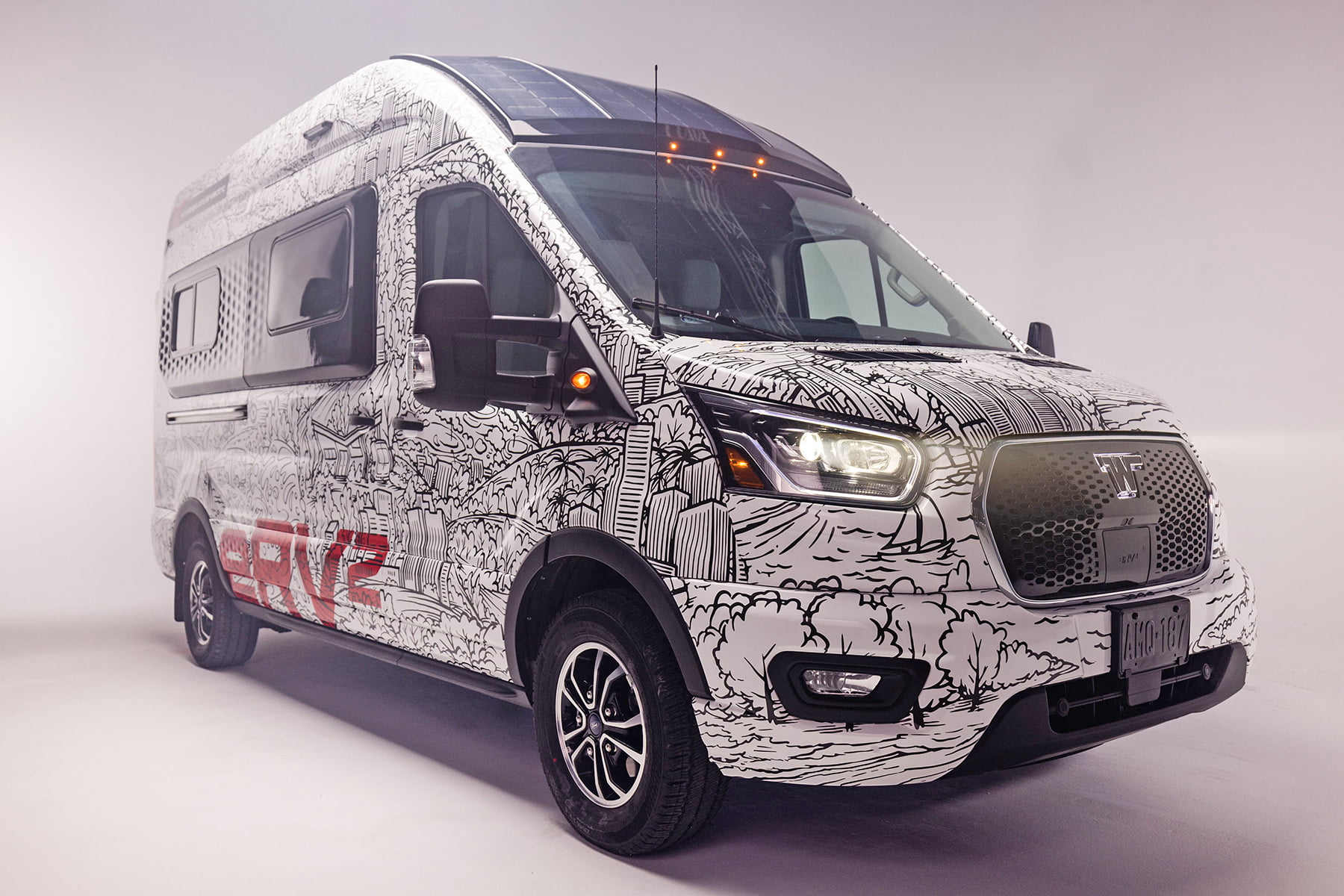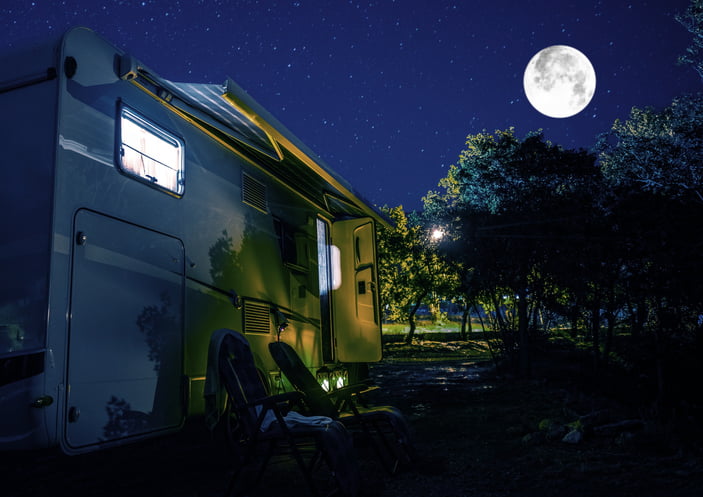Presented at the 2023 Tampa Super RV Show, the Winnebago eRV2 is a new Class B based on the all-electric Ford Transit van. While the Ford chassis provides all-electric propulsion, Winnebago adds its proprietary IonBlade house battery system for an all-electric experience. They say this system could give you up to seven days of boondocking capability.
I had a chance to review and drive the Winnebago eRV2
First, this is one of the most interesting RVs I’ve driven that (unfortunately) you can’t buy. Currently, the eRV2 is only being field tested.
After presenting the eRV at the 2022 Tampa Super RV Show, Winnebago has followed up with their new eRV2. This is now their most advanced, all-electric, zero-emission RV anywhere. They brought it to the show to offer test drives and walk-throughs. The comments and reactions they collected from consumers (and reviewers like me) are part of the rigorous field testing that will impact the eRV2’s final design before hitting dealerships.
From a driving perspective, I can report two very distinct impressions from behind the wheel:
- The Transit drives like any Class B I’ve piloted before, size-wise and in its road manners.
- The balance and feel of this Transit are unlike any Class B I’ve driven before. By balance, I mean how the body rides on the chassis, corners, and handles uneven surfaces. It’s rock-solid and rides dead flat. The key to this sensation is placing the Ford battery pack (and the house battery). Both are placed low in the chassis, and spreading their weight evenly between the front and rear axle gives the Transit a planted feel, unlike any other conventionally powered van. This shallow centre of gravity sticks the eRV2 to the road. It’s been said that it feels like it’s riding on rails – a comment I can attest to.
Why did they build it?
Winnebago says it developed the eRV2 in response to a growing demand for more sustainable forms of road travel.
“Our primary goal in building the eRV2 was to help people comfortably explore the world around them with less environmental impact,” said Huw Bower, president of the Winnebago brand. “The user experience was at the heart of this prototype’s development, through the early days of market research and even now as it goes through field testing. The eRV2 embodies our pioneering legacy, representing achievement in design, innovation and sustainability and our commitment to continuously evolve with the changing needs of consumers and the world we share.”
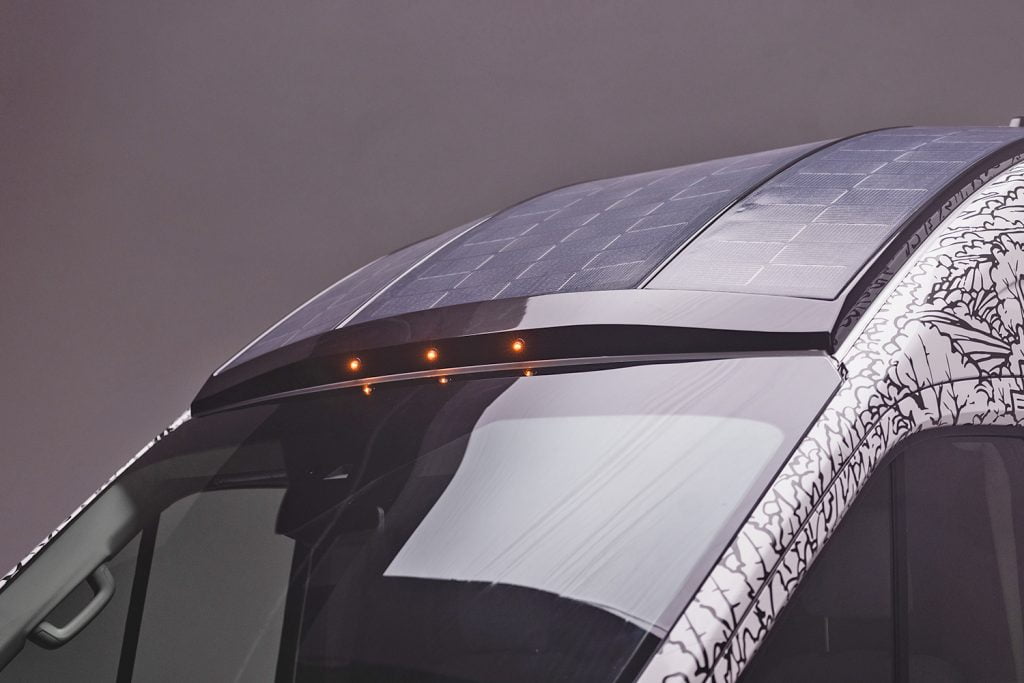
Photo Credit: Winnebago
Key Features and Benefits of the eRV2:
- The powertrain and the house systems are powered by electricity, allowing for silent and environmentally responsible travel and up to seven days of Boondocking, aided partly by 900-Watt solar capacity.
- It’s built on a Ford E-Transit chassis, which promises powerful torque and smooth handling. The current generation of this chassis has a published range of 108 miles (170 km), well-suited for a pilot program. Winnebago is actively pursuing range extension opportunities to incorporate into a future commercial version.
- Winnebago partnered with Lithionics Battery to create a proprietary IonBlade lithium house battery, the most powerful, compact, and safe battery system available today. It features a 48V system with more than 15,000 usable watt-hours and a unique thin lay-flat design stored beneath the floor to maximize interior space. It meets the highest safety standards.
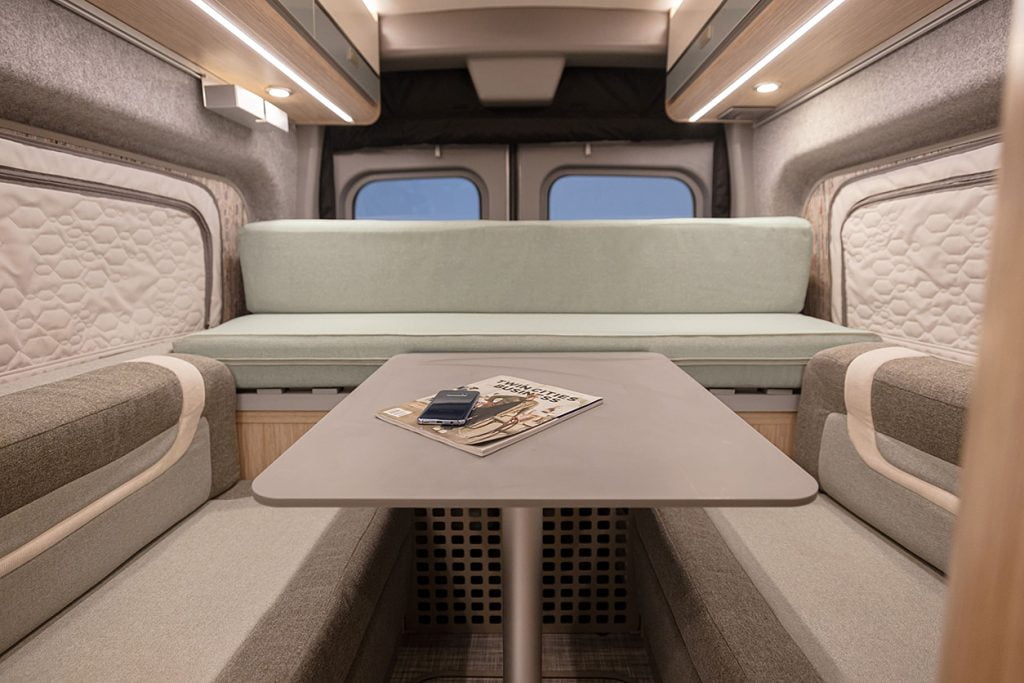
Photo Credit: Winnebago
Sustainably designed to reduce the impact on the environment further
- Recycled materials are used extensively throughout the interior, including the flooring, removable floor mats, WinnSleep mattress system, and trimming around the window frames.
- Cab seat coverings are made with renewable plant-based materials.
- Acrylic countertops are made from biodegradable materials.
- Unique broad colour-spectrum lighting allows users to customize the interior lights from white to red, which helps to reduce light pollution and adverse effects on native flora and fauna.
Insert Image: eRV2-Interior Front-to-back w_Laptop 2.jpg
Insert Image Alt Text: A laptop sitting on tip of one of the Winnebago eRV2’s built-in, adaptable workspaces.
Insert Image Caption: Photo Credit: Winnebago
Built for maximum comfort and convenience, centred on modern user needs
- The eRV2 interior is inspired by modern Japandi principles, a fusion of Japanese and Scandinavian design that creates a clean, calm, multi-functional environment.
- This includes a five-in-one sleep/lounge, two adaptable workspaces with built-in charge points, and a high-speed Wi-Fi router for optimal data streaming.
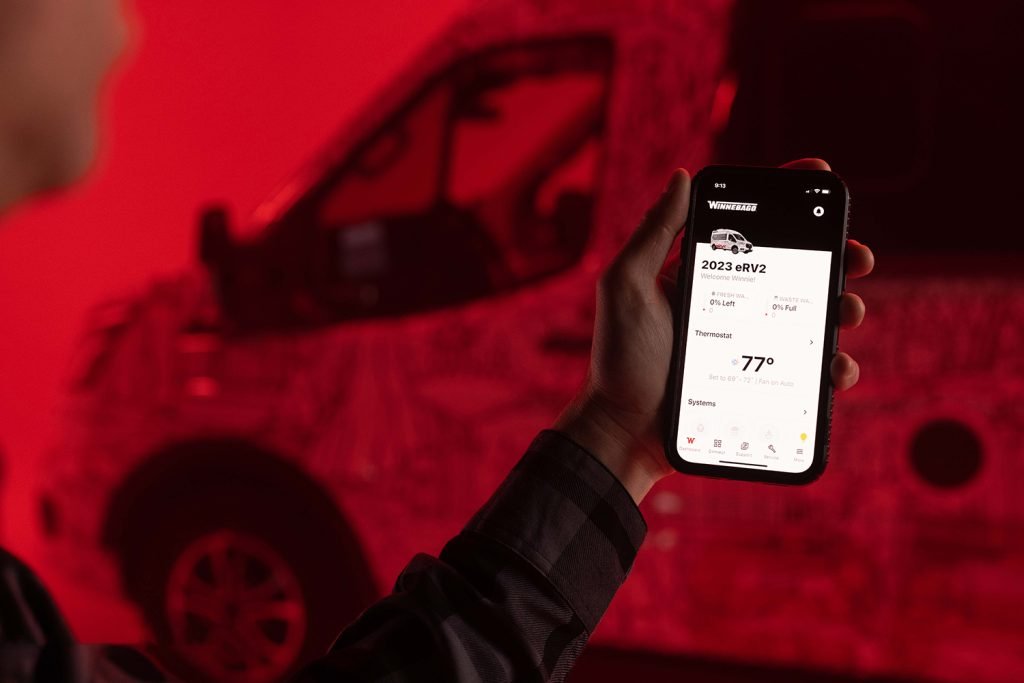
Photo Credit: Winnebago
Finally, the eRV2 is connected.
- The proprietary Winnebago Connect™ system allows users to easily monitor and control the vehicle’s electrical and energy management systems using a display inside the vehicle or an intuitive app that will work on your smartphone.
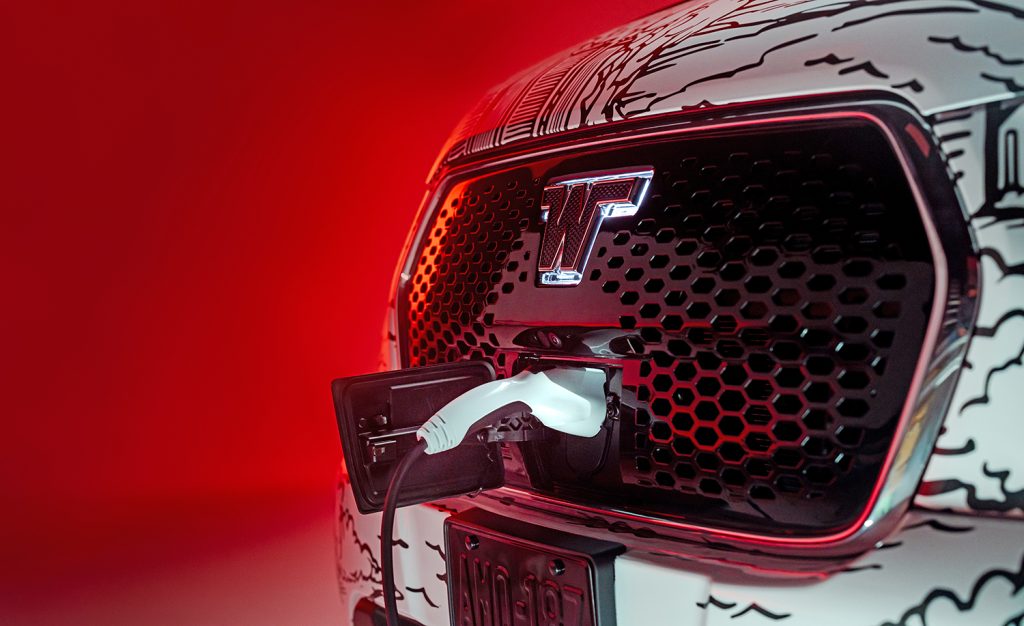
Photo Credit: Winnebago
Looking at this pre-production model, I must first compliment Winnebago on building a working electric RV. This eRV2 demonstrates not only what can be done, but it’s also a version of what’s to come. Winnebago is not waiting; they are determined to ride the coming wave. However, at the moment, there are still some glaring issues that need to be addressed. A driving range of 172 km on a full battery charge may work for a last-mile delivery van but is not practical for an RV.
Second, Winnebago has developed its independent battery system for the house (IonBlade), partly because Ford has proprietary rights to its onboard battery and won’t allow anything else to be plugged into it. This, too, should change. Of course, I can see that this IonBlade battery system may very well start popping up in our Winnebago products.
Lastly, campgrounds traditionally provided unmonitored electricity as part of the lot fee may have to rethink that model as these new e-RVs will draw a lot more juice. This is the current glimpse of the future. There is more work to be done, but it’s exciting.
To watch a complete walk-through, check out the Truck King YouTube channel. Watch our blog for more RV reviews and updates, or sign up for the Explorer RV Club newsletter.

